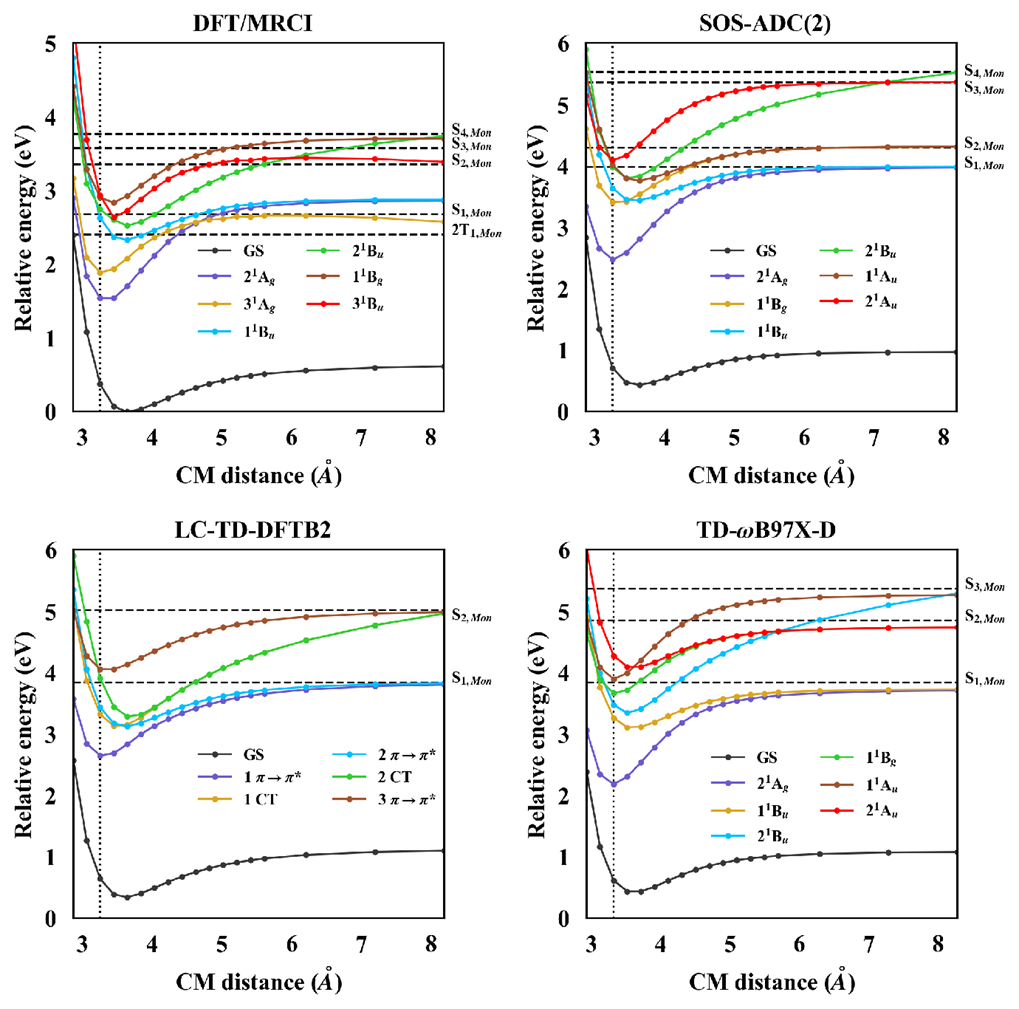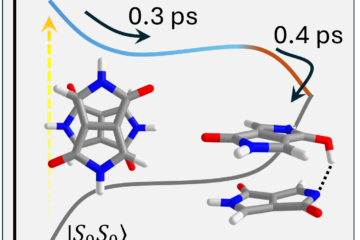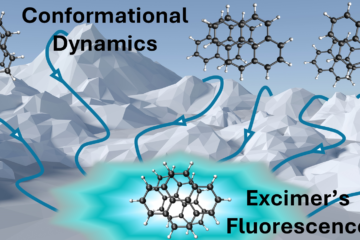Stacked-excimer double excitation is the door for singlet fission.
In brief:
- Ground- and excited-state minima of tetracene dimers were determined with several quantum-chemical methods.
- The S1 state stabilizes in a near-D2h stacked excimer.
- The excimer dissociates through a doubly-excited state with twice the T1 energy, being the door for singlet fission.
Several potential advantages, such as low synthesis cost, have stimulated the search for organic optoelectronic materials. Among these materials, a particularly important class is that of the polycyclic aromatic hydrocarbons (PAHs) due to their potential application as organic semiconductors and their relevance for spintronics, astrochemistry, and nonlinear optics.
Tetracene and its derivatives, in particular, are the focus of a renewed interest due to the singlet fission phenomenon and the promise of increased efficiency in optoelectronic devices.
In a project led by Hans Lischka (Lubbock) and Thiago M. Cardozo (Rio de Janeiro), we have performed extended quantum-chemical calculations for the tetracene dimer to provide benchmark results and analyze the excimer survival process. We are also interested in assessing the quality of TD-LC-DFTB2, TD-ωB97XD, SOS-ADC(2), and DFT/MRCI for this system.
Ground- and first-excited-states optimized geometries, vertical excitations at relevant minima, and intermonomer displacement potential energy curves were calculated for these purposes.
All methods predict the lowest-energy S0 conformer to have monomers parallel and rotated relative to each other. The lowest S1 conformer is of a displaced-stacked type. LC-DFTB2, however, presents some relevant differences regarding other conformers for S0.

Potential energy curves as a function of the center-of-mass distance between monomers around the S1 minimum.
Despite state-order inversions, an overall good agreement between methods was observed in the spectral shape, state character, and potential energy curves. Nevertheless, DFT/MRCI predicts that the S1 state should acquire a doubly excited-state character relevant to the excimer survival process.
The S1 excimer dissociates through the 31Ag doubly-excited state to energy near twice that of the T1 state. Thus, this excimer dissociation seems to be the route for singlet fission in tetracene dimers.
The potential energy curves also revealed that the dissociation energy (De) is proportional to the distance upon which charge-transfer interactions vanish, which means that charge-transfer interactions are necessary for the excimer stabilization.
MB
Reference
[1] D. C. A. Valente, M. T. d. Casal, M. Barbatti, T. A. Niehaus, A. Aquino, H. Lischka, and T. M. Cardozo, Excitonic and Charge Transfer Interactions in Tetracene Stacked and T-shaped Dimers, J. Chem. Phys. DOI:10.1063/5.0033272 (2021).
This research was partially done in the framework of the Fet Open BoostCrop project (Grant Agreement 828753).



